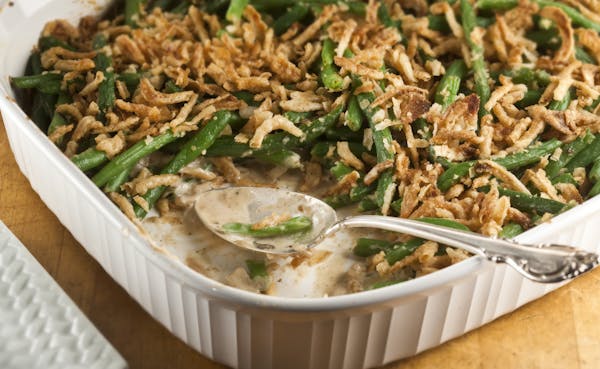Step away from the sous-vide machine and microwave. It's time to embrace the casserole, that oven-baked creation, and give it the respect it deserves.
Its legacy is rich, having sustained humans for centuries — no, not the green bean casserole your grandma made in the '60s, but some of the culinary world's greatest hits: the pork, sausage and bean cassoulet from France, eggplant and lamb moussaka from Greece and that curly pasta, cheese and sauce lasagna from Italy.
They may not be called casseroles, but they are. That, perhaps, is where the confusion comes in, for the word casserole refers not only to a prepared dish but to the cooking vessel as well.
"There are two histories of casseroles. There's a medieval history and the modern history. The modern history really begins in America," says Clifford A. Wright, author of "Bake Until Bubbly: The Ultimate Casserole Cookbook" and "Hot & Cheesy."
"Casserole, the cooking vessel, which we usually think of as being rectangular and ceramic, really began to take off in the late 19th century," Wright says. That was thanks to various potteries that were producing a variety of ceramic casseroles that worked well in ovens, coinciding with a time when in-home ovens were becoming more common in the United States.
Their history reflects our history, helping us stretch foods during tough times (world wars, economic depressions) and incorporating scientific advances (ceramic bakeware, canned foods, frozen foods), Wright notes. They joined us at potlucks and church suppers. Every region in the country has one. They show up in movies, TV shows and on YouTube in musical homages. Many have colorful names: Strata. Supper. Supremes. Delights. Hot dish. "There's one called ham medley," Wright says. "It's made of chicken on the bone, with onion, béchamel sauce, ham and Swiss cheese."
He remembers a casserole his mother made in the '50s. "It was the simplest thing in the world. It was just frankfurters, beer and sauerkraut."
Casseroles proved to be time savers, versatile and very economical for home cooks. Yet, Wright points out, in all those early 20th-century cookbooks or magazines, deliciousness or taste was never an issue as long as you got it on the table quickly. "Taste didn't matter because it wasn't about taste. Now they're starting to have a good name because people are starting to pay a lot more attention to food."
Build a better casserole
A well-made casserole often features a mix of textures, sometimes colors and a nice amount of browning, adding another dimension of flavor with that caramelizing. There are some guidelines for building a good one.
First you need to decide its purpose.
Perhaps it's simply a side dish, say a green bean or cauliflower casserole.
"If you're making a casserole as a one-pot dish, in other words, you want to feed your family and you only want to cook one thing — the casserole — then you're going to want some protein, some starch and some vegetable," Wright says.
"You want to pay attention to two things. One, is it balanced and do all the foods in it cook, more or less, at the same time? Let's say you have cubes of potatoes. What are the things that can go in the casserole that will cook in the same amount of time that it takes the potatoes to cook?," asks Wright. "You might want to use pork tenderloin, for example, rather than pork shoulder because it will take about the same amount of time as the potatoes.
"The other thing you've got to remember is it's got to have some kind of moisture to it. If the food itself is not emitting the moisture, what is the moisture going to be? Is it going to be a broth or a little sauce? And then you've got to decide how healthy it should be," Wright adds. "Are you going to put a béchamel or Mornay sauce on top? Sure makes it delicious, but maybe you don't want that much cream and cheese. So you adjust it."
Betty Rosbottom's "Sunday Casseroles: Complete Comfort in One Dish" (Chronicle Books, $24.95) covers a vast array of recipes, a cassoulet rapide to a turkey and corn tortilla matchup and a baked French toast with apples, apricots and cherries. As she notes in her book's intro: "A good marriage is like a casserole; only those responsible for it really know what goes into it" — Anonymous.
Among her casserole tips:
• Shallower dishes tend to cook more quickly than deeper ones.
• Unless there's a lot of braising liquid, butter or oil baking dishes to prevent food from sticking.
• Creamy cheeses that melt easily can be used instead of white or cheese sauces; Gorgonzola and mascarpone are good stand-ins.
• When cooking pasta for casseroles, make sure to season the water with salt, but do not add oil to the pasta water or rinse the drained cooked pasta — both will prevent sauces from adhering to the pasta.
• In addition, or in place of breadcrumb toppings, use toasted nuts (such as almonds, walnuts, pecans).
Live video of man who set himself on fire outside court proves challenging for news organizations
4/20 grew from humble roots to marijuana's high holiday

